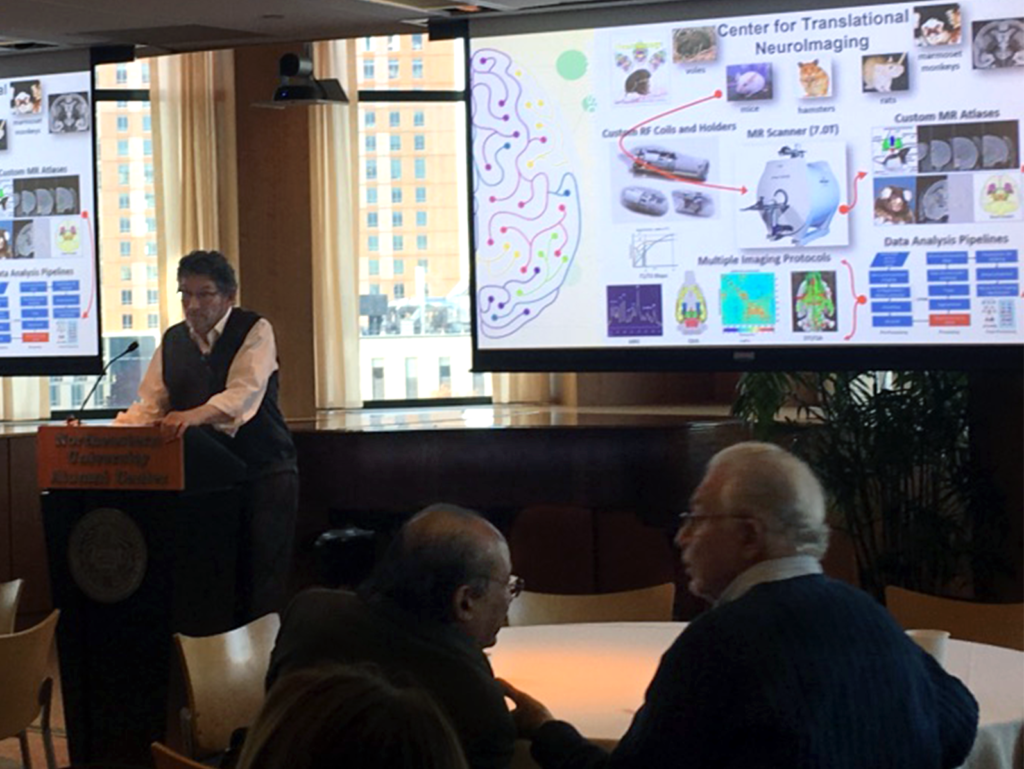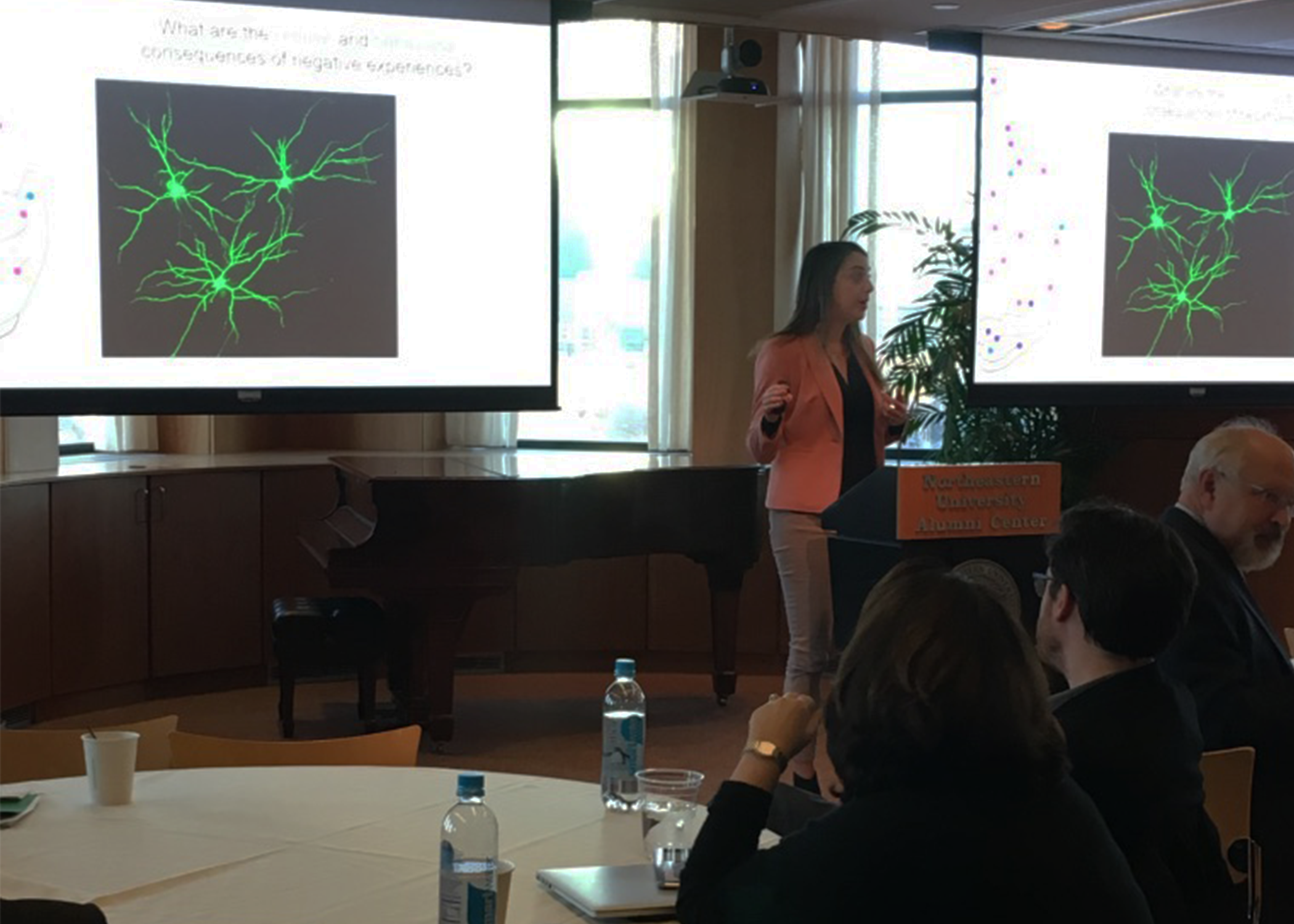There are over 100 faculty members and researchers at Northeastern whose work focuses on neuroscience. With everything from the brain under stress, to imaging of its vasculature, to its control of the body, neuroscience at Northeastern is complex, varying, and collaborative. Last week, the College of Science hosted its second Speed Science Talks, this year with the theme of neuroscience. Eleven presentations were delivered from a variety of faculty members in many departments in the College of Science with the goal of sharing their research interests and forming connections and collaborations among the many fields of neuroscience across campus.
“This event accomplished exactly what we set out to do – increase awareness of the excellence we have across the college and university in neuroscience research, and start the process of organically building research relationships between our faculty,” said College of Science Dean Kenneth Henderson.
Professors shared their current and future research plans, including clinical trials, interdisciplinary collaborations, and exciting projects aimed at improving the human condition. Among these presentations were topics such as early life adversity’s effect on development and mental illnesses and using regenerative fish to study spinal cord injuries and potential cures.
Professor Srinivas Sridhar’s talk featured brand new, detailed images from a human clinical trial using quantitative MRI with magnetic nanoparticles to provide exceptionally detailed vascular images of the brain, from large to micro vessels. Professor Craig Ferris shared his research from the Center for Drug Discovery and the Center for Translational Neuroimaging.

Psychology and Pharmaceutical Sciences Professor Craig Ferris, Director for the Center for Translational Neuroimaging presents on the work done at the center.
“It was really enjoyable to see the emergence of several research themes that have the potential to be developed into areas of preeminence for the university,” Henderson said. “As an example, a number of the researchers highlighted the nexus of neuroscience, aging, and movement where we have outstanding strengths that can be synergized into a powerful research thrust.”
Henderson encouraged participants to find the areas that could naturally come together from one field to another, aiding Northeastern research in being able to “grow to the sum of its parts.”
The afternoon’s success is already inspiring discussion over next semester’s Speed Science Talk, likely around the theme Materials. This topic would bring even more interdisciplinary endeavors across the university, through science, engineering, computer science, and more.

